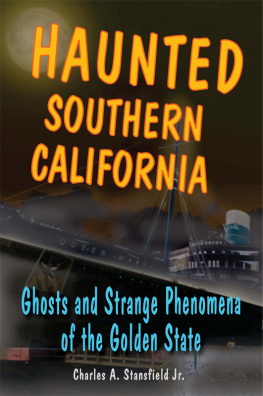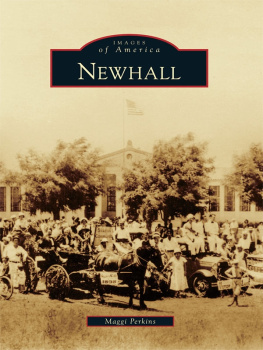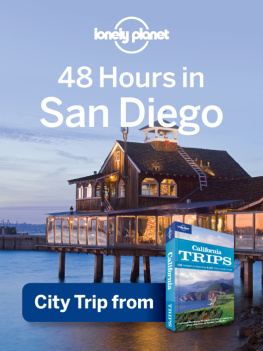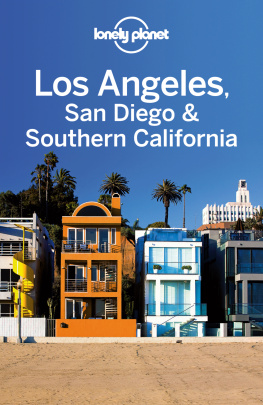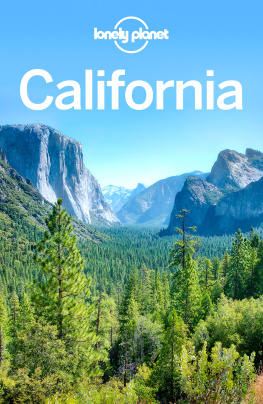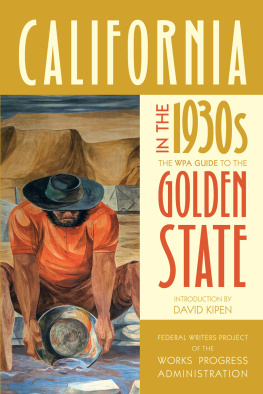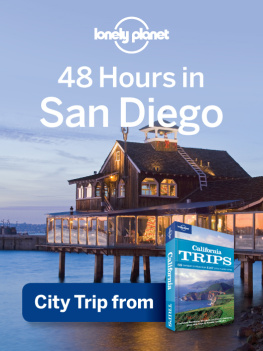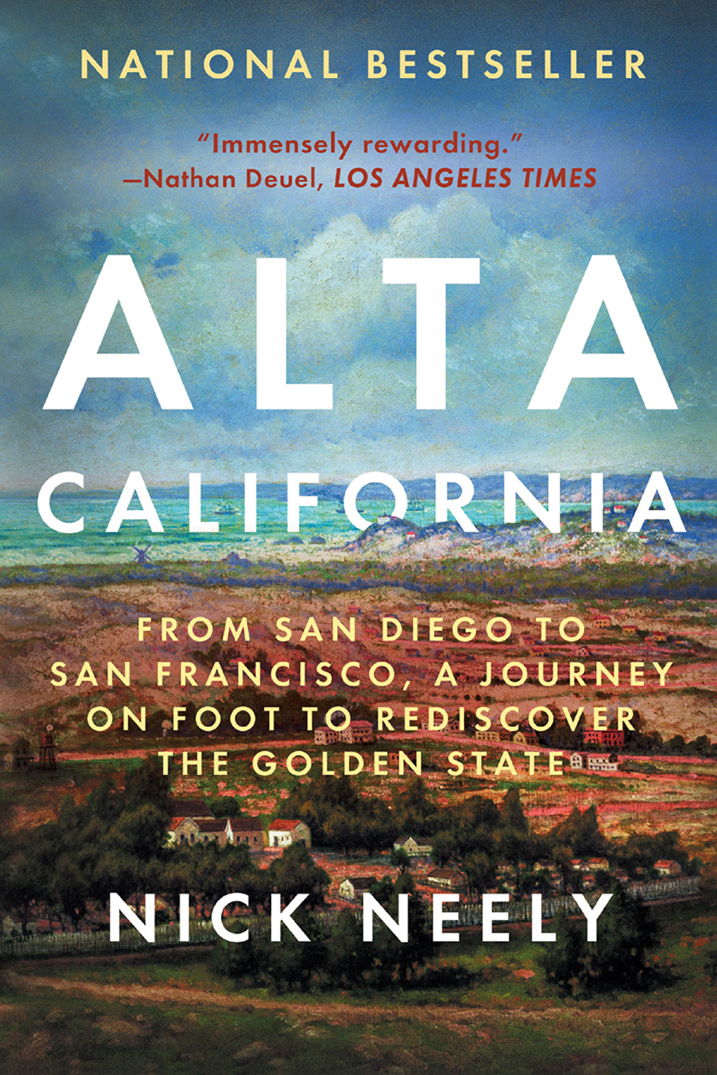Table of Contents
Guide
Praise for Alta California
NATIONAL BESTSELLER
A good book entertains you, but great books transform you in sneaky ways. And it wasnt until weeks after finishing Alta California... that I realized the trick the author had pulled: In the length of a book, he had taken a newish transplant to the Bay Area (me), and completely transformed my sense of our shared landscape by walking me through its current names and their historiesboth troubled and beautiful.
PATRICK THOMAS, San Francisco Chronicle
A collage of history, chance encounters and personal reflection.
MARGARET WAPPLER, Los Angeles Times
Beautifully written... Neely goes on an ambitious plunge into the heart of his home state... Its a journey worth takingand savoring.
DEAN KUIPERS, Alta
[Neelys] eye for detail is sharp and incisive.
HEATHER HANSMAN, Outside
[Neelys] travelogue account of natural and human history is sprinkled with firsthand encounters with wild animals, a tarantula, ants, nettles and poison oak, as well as detailed descriptions of Native cultures and Spanish missions. He also touches on more modern-day topics such as immigration, agriculture, resources and development.
KATE DALY, The Almanac
Neelys naturalist, erudite work will appeal to readers of Thoreaus Walden and Edward Abbeys Desert Solitaire.
Publishers Weekly
Neelys prose is luminous; his eye for detail ensures that you can practically envision yourself in the surroundings, but he doesnt lose sight of the bigger picture, either.
JAIME HERNDON, Book Riot
A story that is both richly thoughtful and a highly entertaining read.
CHRIS MELVILLE, Idaho Mountain Express

ALSO BY NICK NEELY
Coast Range: A Collection from the Pacific Edge

Alta California
Copyright 2019 by Nick Neely
First hardcover edition: 2019
First paperback edition: 2020
All rights reserved under International and Pan-American Copyright Conventions. No part of this book may be used or reproduced in any manner whatsoever without written permission from the publisher, except in the case of brief quotations embodied in critical articles and reviews.
Portions of this book derive from the original research of Professor Alan K. Brown in his translation of Padre Juan Cresps diaries, A Description of Distant Roads: Original Journals of the First Expedition into California, 17691770, published by San Diego State University Press, 2001. We are grateful to SDSU Press for the right to incorporate this research.
The Library of Congress has cataloged the hardcover as follows:
Names: Neely, Nick, author.
Title: Alta California : from San Diego to San Francisco, a journey on foot to rediscover the Golden State / Nick Neely.
Description: Berkeley, California : Counterpoint, 2019.
Identifiers: LCCN 2019018408 | ISBN 9781640091658
Subjects: LCSH: Neely, NickTravelsCalifornia. | CaliforniaDescription and travel. | Portols Expedition, Calif., 17691770.
Classification: LCC F866.2 .N44 2019 | DDC 917.9404dc23
LC record available at https://lccn.loc.gov/2019018408
Paperback ISBN: 978-1-64009-444-4
Cover design by Sarah Brody
Book design by Jordan Koluch
Maps by Colin Webber
COUNTERPOINT
2560 Ninth Street, Suite 318
Berkeley, CA 94710
www.counterpointpress.com
Printed in the United States of America
Distributed by Publishers Group West
10 9 8 7 6 5 4 3 2 1
For California
CONTENTS
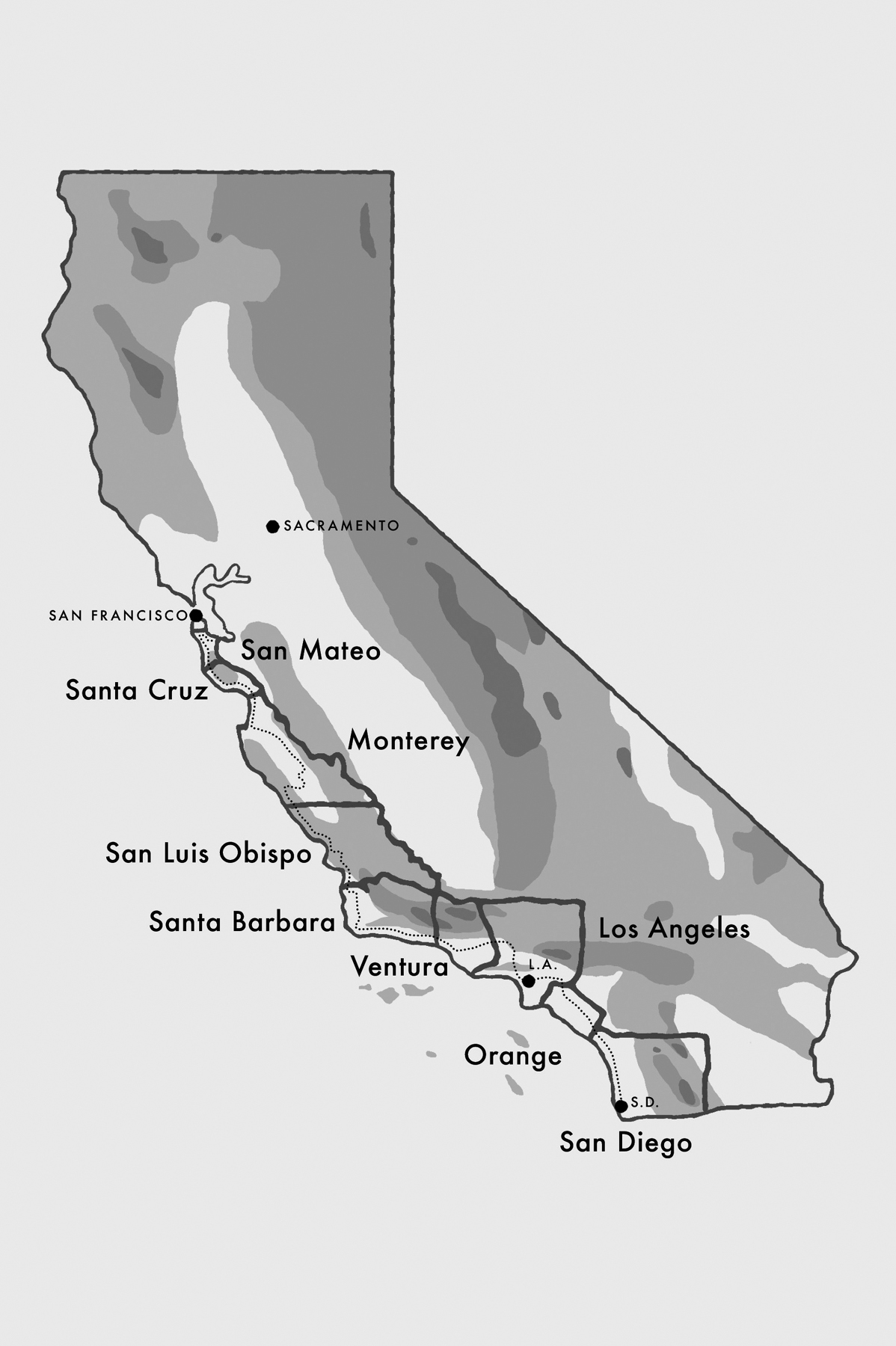
AS DARKNESS FELL, I FOUND myself sitting on the bluffs above the Pacific in Gaviota, a community west of Santa Barbara that is more actually a lonely State Park on one of the remotest parts of the California coast. All day I had waited nervously in the campground, sometimes idly cracking walnuts I had gatheredweeks back in Los Angeles, in sight of a nodding pump jackwith granite beach stones on a picnic table, just as a sea otter smashes clams on its belly with a rock. With my grimy fingernails, I teased the antlered nuts from the shells and onto my tongue, usually with a few salty grains of sand. For real fuel, in late afternoon I Jetboiled pasta and squash and poured a can of bland tomato sauce over the steaming tangle. Finally, as dusk approached, I hoisted my pack, which was laden with four liters of water, and scrambled up an eroded slope to the bluff top, where I settled low into the long dry grass like a deer, using my heavy pack as a backrest. The ocean below rolled onto Gaviota Beach, forever, the breakers a drumbeat that fed the rising movement in the sea cave of my chest: I was preparing, in just a few minutes, to walk twenty miles in the dark, without a flashlight, on the Union Pacific railroad tracks. These rails would take me through the exclusive Hollister and Cojo-Jalama Ranches, the vast private holdings that surround Point Conception, where Southern California is said to turn to Northern. I had been denied permission to cross these lands and it was impossible to walk on the beach because of the tides and the rugged point. But I wasnt willing to detour.
This was six weeks, or about halfway, into my journey on foot from San Diego to San Francisco to retrace the first overland Spanish expedition through California. I had already walked through the suburbs of San Diego, inland through Orange County and Los Angeles, then through the sweltering San Fernando Valley and over a high pass to the Santa Clara River Valley, and at last back to the refrigerated coast and its strawberries. I had been stalked by a mountain lion, nearly run over by cars, and escorted out of a neighborhood near Ventura because I wasnt welcome there and was perceived as a threat. I had watched male tarantulas the size of my palm cross an empty road at dusk in search of females, and a colony of endangered terns feed silver baitfish to their ruffled fledglings. Most nights I had slept in my two-pound solo tent in the vacant threads of suburbiadry creek beds are an urban trekkers friendbut tonight I wouldnt sleep. I would walk with the coyotes. The Hollister Ranch, a famous and contentiously off-limits surfing stretch, was scattered with the homes of the rich and famous, and thus private security patrolled its roads.
In 1769, Captain Gaspar de Portol led a band of Spaniards up this coast. Sometimes called the Sacred Expedition, from July 14 to November 6, his party of about sixty-three men went north from San Diego on foot and by horse, with over fifty mules shouldering chests of supplies, until finally they crested a low coastal mountain range and sawdiscoveredan unknown arm of sea: San Francisco Bay. It was ringed with smoke rising from numerous Ohlone and Miwok villages. In the 1760s, three hundred thousand natives lived in whats now California, sixty thousand of them along the coast. Now the San Francisco Bay alone supports a metropolis of over 7 million. I had grown up there, in a town called Portola Valley. The expedition had traveled south toward my neighborhood, unwittingly plodding above the San Andreas Fault to what today is the heart of Silicon Valley. There the buffcoat soldiers gathered acorns to nourish their famished bodies. By then they were surviving on gifts from the natives or else a single griddle cake of flour a day. We know these details because several members of the expedition kept journals: Portol (his is quite terse), an engineer named Miguel Costans, and especially Juan Cresp, the Franciscan friar who was asked to be the expeditions official diarist.
Next page

